#blog Digital Media: Sources and Significance
Explore tagged Tumblr posts
Text
8. The Role of Game Art in Enhancing Gaming Experiences
With all the competition in the gaming industry, game art has become the first thing gamers notice about a game. When browsing for new games on Steam, art is one of the main things I look for. But it doesn't necessarily have to have beautiful graphics or AAA-level artwork for me to be willing to buy a game. So, I started thinking about how game art affects the gaming experience. What's the role of game art in a game? After reading articles on the subject, I came up with three things.
1. Environment Art: Creating a Believable Visual World
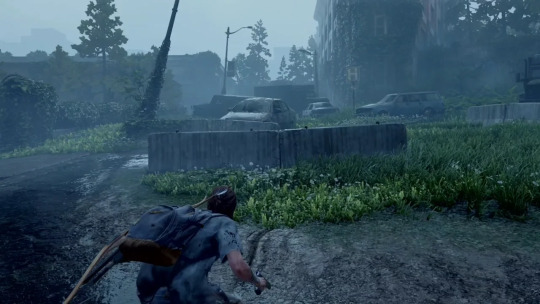
When you put aside the game's mechanics, the most interesting part is the world the game has created. It doesn't matter if the world is fantasy or realistic; the goal is to let the player enter a world the game designer made. And that's where game art shines. After all, we're visual creatures, right? Even if the story is about a beautiful and fascinating world, most people will have difficulty imagining what it's like if they don't see the images.
That's why environmental art is so important in-game art. Good environment art isn't about how realistic or beautiful it is. It's about understanding the game's worldview and creating an environment that makes the players feel like they're there. It also helps players quickly understand the game's worldview visually.
Example:
The Last of Us is a great example of environmental art that feels like part of the game. The crumbling cities, moss-covered buildings, and quiet natural landscapes don't just make the post-apocalyptic world feel real. They also let players feel the oppression and loneliness that's everywhere. These details aren't just for show — they're part of the game's story, making you feel like a post-apocalyptic world.
The main goal of environmental art in games is to blend the virtual and realistic elements of the game, finding the right balance so that players can feel immersed in the visual and spatial aspects of the game.
2. Character Design: Building Emotional Connections
Another thing to remember is that character design is meant to help the player build an emotional connection with the game character.
Most games let you take on the role of a character and adventure through the game world. But how to let players from all over the world play the same character and successfully build an emotional connection with that character is a very important task of character design in game art. It's not just about drawing a character's appearance but also creating a convincing look based on their personality and world.
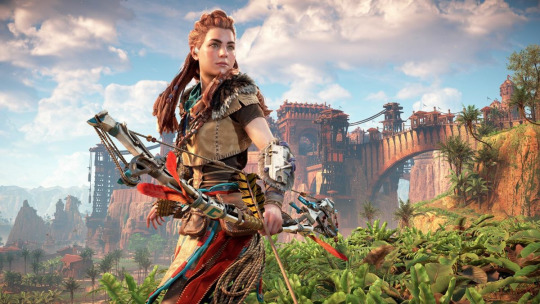
Example:
In Horizon Zero Dawn, the main character, Eloi, has a costume that mixes primitive tribal style with high-tech elements. This expresses the contradiction between humans and machines in the game world. This design helps the player appreciate her appearance and understand her identity and spirit of adventure, making them more invested in her journey.
3. Symbols and Colors: Conveying Messages and Emotions
The third thing to remember is that the game art should carefully handle the message and emotion conveyed by every symbol and color in the game.
Every symbol and color in the game can influence how the player understands it as they play. Good symbols and colors can help players understand an unfamiliar worldview more easily and immerse themselves in the game more quickly.
Example:
Take The Witcher 3: Wild Hunt, for example. The flags and architectural patterns of different regions show different cultures and histories. The use of cool colors in the game gives the player a sense of the harshness of the northern kingdoms, while the warmth of candlelight and the texture of wood create an atmosphere of safety and comfort, helping the player to adapt to the environment and experience the plot quickly.
Conclusion
Overall, the game's art does a good job of getting the players to feel like they're there in the game world. After reading the articles, good game art is to understand the game's worldview and core mechanics and then create a visual world unique to the game through environments, characters, symbols, and colors.
Reference
Inventive Studio (n.d.) 'How game art style can enhance your project,' Inventive Studio. Available at: https://www.inventivestudio.co.uk/how-game-art-style-can-enhance-your-project/ (Accessed: [6 Jan 2025]).
Ixie Gaming (n.d.) 'The impact of game art on player experience,' Ixie Gaming. Available at: https://www.ixiegaming.com/blog/the-impact-of-game-art-on-player-experience/ (Accessed: [6 Jan 2025]).
Rocky Mountain College of Art + Design (RMCAD) (n.d.) 'Game art and virtual reality: Creating immersive experiences,' RMCAD. Available at: https://www.rmcad.edu/blog/game-art-and-virtual-reality-creating-immersive-experiences/ (Accessed: [6 Jan 2025]).
0 notes
Text
Academic Blog #2
(If I had known I'd need to cite so much reference material, I would have quoted less content. And it seems I might have been a bit too chatty in my last piece.)
This time, let's talk about one of my personal favorite designs in the Mobile Suit Gundam series: the YMT-05 Hildolfr.

1/100 Model of YMT-05 Hildolfr (Mobile Mode)

1/100 Model of YMT-05 Hildolfr (Tank Mode)
From a conceptual and hard-surface design perspective, the YMT-05 Hildolfr's design by Hajime Katoki is noteworthy for several reasons. The transformable nature of the Hildolfr, which allows it to shift from a mobile tank to a humanoid form.
The hard-surface design is especially prominent in the Hildolfr's tank form, where the emphasis on angular, protective plating contributes to a believable armored vehicle capable of withstanding and delivering heavy firepower. In MS form, these surfaces transition seamlessly to accommodate bipedal movement, showcasing Katoki's ability to blend form and function without compromising the integrity of either mode.
Additionally, the design of the main cannon, which maintains prominence in both forms, is a successful example of integrating a significant weapon system into the overall form factor. This not only enhances the visual impact of the design but also implies a practical and purposeful construction, an essential aspect of hard-surface design.
And the color scheme and the detailing work, including the panel lines and mechanical joints, give a sense of realism and practicality to the design. It suggests a machine built for purpose, rather than spectacle, aligning with modern design principles that value utility as much as aesthetics.
The Hildolfr's design strengths lie in its transformative ability, practical hard-surface detailing, and a functional weapon system integration, all encapsulated in a design that communicates speed, agility, and ruggedness.
Though it seems that not many fans have taken to this design, leading to its lukewarm reception. Perhaps, in the Japanese sci-fi domain, which often venerates the trendy aesthetics, a design that prioritizes practicality over flashiness fails to capture attention. But I'm quite certain that if such a design were to be more widely seen, its allure would surely spread far and wide.
References
Mobile Suit Gundam MS IGLOO: The Hidden One Year War (2004) Directed by I. Takashi. [Feature Film]. Bandai Namco Filmworks Inc.
3 notes
·
View notes
Text
Blog 10: VR Technologies
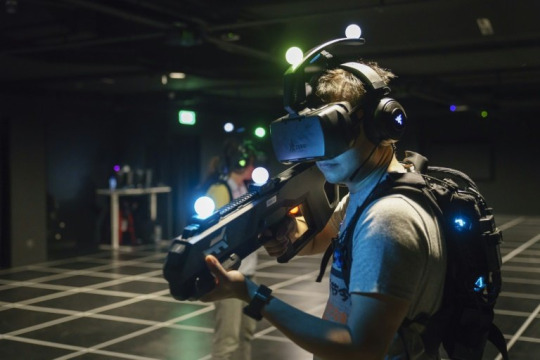
The “Half-life” refers to an immersive storytelling by the creative exploration of the VR, and the transaction of how the players do interaction with the upcoming narratives which is not easy. This game brings players directly within its wealth of detail by integrating tactile interactions, such as reloading weapons, rummaging through shelves for supplies and solving puzzles requiring all your senses. These mechanics serve to increase a player��s sense of presence in the story, creating a sensation of actually living the story, rather than simple watching it.
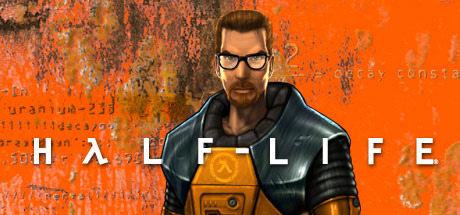
The concept is embodied cognition in that mental engagement and understanding is a function of physical actions in the game. In addition to playing through the story, players also interact with the environment in ways to further string along the tension, stakes and realism of the narrative. This means, for instance, loading ammunition into a weapon manually while being ambushed gives you that unparalleled layer of urgency and immersion that just makes you feel like god, adds extra stakes emotionally.
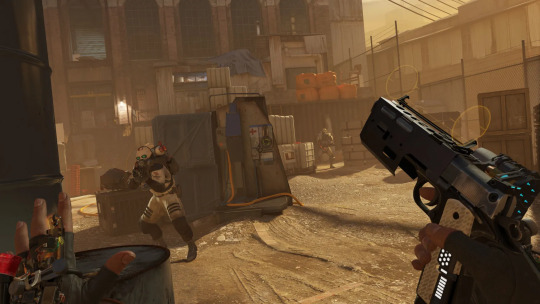
It demands a degree of interactivity that calls into question orthodoxy about stories, focusing instead on player agency and saliency. Unlike passive media forms like books or films, *Half-Life: The story is also played out at the pace of your choosing, with opportunities to rack up details and bond with characters and the world whereas present.
By setting a new benchmark for VR storytelling, Half-Life: Alyx, though, also demonstrates the capacity of the medium to substantially reshape narratives by sweeping away the barriers keeping them passive to creating audiences that are fully engaged with digital media and active participants (Chan, 2014; Ryan, 2003).
Such immersive narratives are emblematic of the move toward hyperreal experiences, where virtual environments μπορούν (Baudrillard 1988) elicit feelings more “real than the real.” Such an advancement emphasizes how VR is not only a new medium of storytelling but also a technology that can change how an audience engages.
Conculsion
This article, concerning Half-Life: Alyx as a strong benchmark attempt of VR storytelling is highly relevant to the understanding of the future of interactive digital media. It highlights how tactile interactions and embodied cognition turn storytelling into an active, emotionally charged journey rather than a passive experience. It is useful in understanding how VR engages audiences on the physical, emotional, and narrative level — an insight useful to my own creative and analytical practice. Interactivity and immersion is not just a technical feature — it is a core part of how players see, interact with and internalize narratives.This ties into VRs potential to rethink the part of the player, obscuring lines between group of onlookers member and story being . In practical terms, this lesson may encourage me to find approaches for producing interactive or immersive experiences of my own. In writing stories that react to user input and focus on the senses first, I hope to create experiences things that engage with audiences in potentially new and meaningful ways, and develop personhood with the audience present. This realization validates our colleague that a media with degrees of intervention across the continuum activates work beyond observation to devise active engagement of abstraction.
References
Baudrillard, J. (1988) Selected Writings. Stanford: Stanford University Press.
Chan, M. (2014) Virtual Reality: Representations in Contemporary Media. New York: Bloomsbury Academic.
Ryan, M.L. (2003) Narrative as Virtual Reality. Baltimore: The Johns Hopkins University Press.
0 notes
Text
Digital Media: Sources & Significance
Academic Blog
Academic Blog Post #01
I would like to use the theory we’ve learned about emotion and affect to examine how movies can be affective and how it evoke emotions in audience. So I chose one of my favorite movie, “Hachiko: A Dog’s Tale” as an example to explain the theory of Affect.

Plot
The movie is based on true story of a most loyal dog in Japan. The film exhibits the tale of Hachi’s lifelong devotion to his master. The story begins when college professor Parker Wilson (Richard Gere) finds an abandoned dog at a train station and out of the goodness of his heart, takes the dogs home. Unable to find the dog’s owner, Parker and her family eventually adopted the dog. Overtime, the two formed an inseparable bond and went on adventures together. Hachi has made a habit of walking the professor to the station every morning and waiting for the professor’s train to arrive in the afternoon. Ten years after his master’s unexpected death, Hachi still waited devotedly for Parker at the train station every afternoon. The story conveys the deep relationship and commitment between a human and a pet. It clearly shows the value of respect between humans and between humans and their pets.
References
Hachiko: A movie review (no date). https://thepinoywanderer.blogspot.com/2012/04/hachiko-dogs-story-movie-review.html.
Academic Blog Post #02
For this blog, I would like to discuss about transmedia. For an example I chose my favorite game league of legends.
League of Legends is an incredibly popular video game worldwide, developed by Riot Games. It has garnered a massive following due to its captivating gameplay and strategic elements. The game revolves around a team-based competitive format, where players must employ tactics and take on their opponents with skill and precision. With its complex mechanics and fast-paced nature, League of Legends offers a challenging and exhilarating gaming experience.

In a typical match, two teams of five players each work together to destroy the enemy Nexus before the opposing team does the same to their Nexus. To enhance the gameplay, players can select from a vast pool of around 140 unique characters, known as champions. These champions possess their own distinct strengths, abilities, and personalities, allowing players to find a champion that suits their preferred playstyle.
Intriguingly, League of Legends extended its influence beyond the realm of gaming with the debut of its animated series called "Arcane" in 2021. Created by Alex Yee and Christian Linke, the show offers a captivating narrative that delves into the lives of two orphaned sisters who grow up together. However, their paths diverge as they mature, leading them to become bitter rivals. The series explores the consequences of their choices and the transformative power of circumstance.
To partake in the game, teams select different locations on Summoner's Rift, which is the main map utilized in League of Legends. This map serves as the battleground where teams compete against each other, vying for control and dominance. As the game progresses, players engage in various operations, such as battling computer-controlled minions, demolishing enemy turrets, and eliminating enemy champions. These actions yield gold rewards, which players can invest in empowering their champions, thus increasing their chances of controlling the game. Ultimately, the team that effectively exploits these advantages can push forward, overcome their opponents, and emerge victorious.
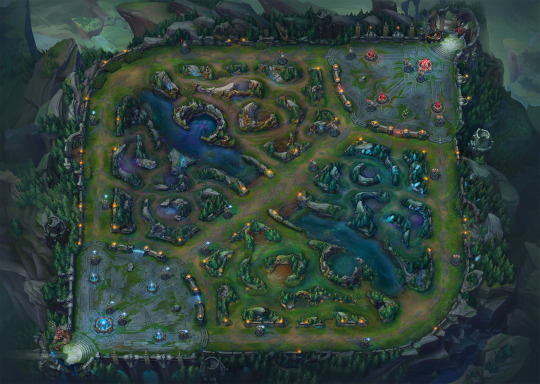
References
Arcane (TV Series 2021– ) ⭐ 9.0 | Animation, Action, Adventure (2021). https://www.imdb.com/title/tt11126994/
Walser, A. (2021) How is Arcane related to League of Legends — and what changed? https://collider.com/how-is-arcane-related-to-league-of-legends/.
Academic Blog Post #3
Realism in film focuses on the mundane aspects of everyday life and brings a “real” aspect of life to the screen. The images are generally static with little movement, and the camera tends to visualize the images. There is no art in the lighting and composition. The scenes are shot on location and not on custom sets. The films are edited for continuity rather than artistic effects to capture the attention of the audience. The music and soundtrack are particularly digestive (like when the characters visit the world in real time). Virtual reality advocates believe these guns are highly targeted.
An example for realism is the movie of Michael Radford’s The Merchant of Venice(2004), starred by Al Pacino. Especially in the opening sequence of the film, realistic techniques are used to transport viewers to “Venice, 1596” which is announced on screen.
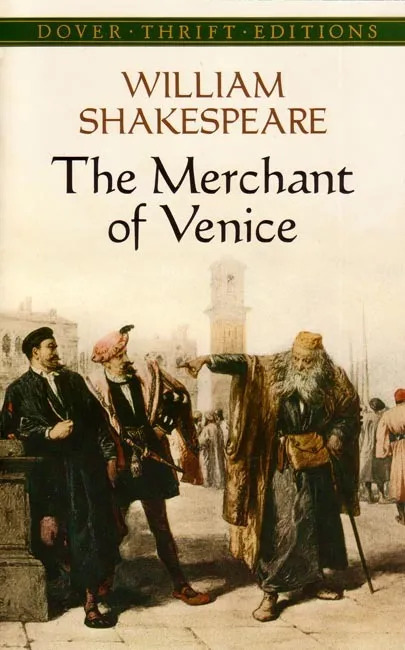
There are no graphic devices ( like the television reporter in “Baz Luhrmann’s Romeo + Juliet). Several intertitles using a camera using film as a documentary lens in the installation shot describe historical cases of anti-semitism and long shots show monks preaching from a ‘Venetian Gondola’ with a christian cross blocking the Rialto able to see it in the right direction.
References
Realism – Screening Shakespeare (no date). https://screenshakespeare.org/theory/realism/#:~:text=Some%20realist%20filmmakers%20include%20Vittorio,2004)%2C%20starring%20Al%20Pacino.
Academic Blog Post #4
In the case of Narrative story telling, I would like to choose the game, Tomb Raider developed by Crystal Dynamics, Core Design & Eidos Montreal. The game has adapted from, “Lara Croft: Tomb Raider (2001) and Lara Croft : Tomb Raider – The Cradle of Life (2003).

Narrative is a choice of events to associate with and in sequence – so the narrative is the manifestation of a particular position or object, rather than the narrative itself being a simple way of remembering the difference between a novel and a novel between novels by changing the sequence of events . Another sequence of events means you have another version of the same story. Narrative transforms narrative into information, or better yet, knowledge for the recipient (viewer or reader). Each event is a knowledge search by the audience. The story is a paradox, because it seeks to conceal and reveal the truth. The storyteller arranges the sources of knowledge so that they are revealed in chronological order, suggesting that the truth behind the initial claims is elusive Such deliberate authorial intent creates a sense of mystery or oppression , the audience's desire to know what happens in the story and why It's reporting conflicts.
In case of the game Tomb Raider (2013), narrative is a masterclass in the use of the video games medium to create emotionally charged and character-driven experiences The game achieves a delicate balance between demanding gameplay and complex storytelling by Lara Croft's early narrative analysis upon. Breaking down the key elements that contribute to Tomb Raider's successful narrative, examines how the game deftly blends character development, environmental history, and player agency to provide a cohesive insight and it’s exciting about the effort that goes into such a game. We’ll discover storytelling techniques that elevate this game above just an action-adventure theme, add cheating landscapes alongside Lara and set it as a model for the art of interactive content.
References
Dherman, C. (2023) 'Tomb Raider — A case study in the design of game narrative,' Medium, 3 December. https://medium.com/@christopher_dherman/tomb-raider-a-case-study-in-the-design-of-game-narrative-06dc4669b404.
Academic Blog Post #5
The word Virtual Reality gives the feeling of near and reality what we experience as human beings. The term virtual reality is used to describe a three-dimensional, computer-generated environment that can be explored and interacted with. That person becomes part of this virtual world or participates in this environment and while there is capable of manipulating objects or performing a series of actions.
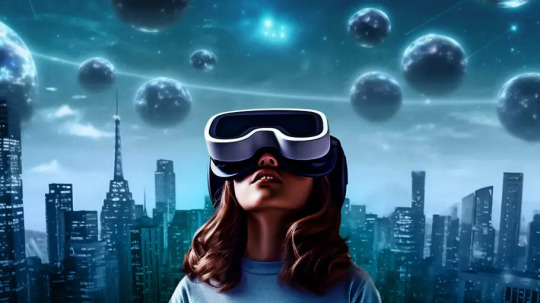
The virtual environment must provide relevant information – in real time- as the person explores their environment. Problems arise when there is a lag or delay between an individual’s actions and a system’s response that then disrupts their experience. The individual is aware that he or she is in an artificial environment and adapts his or her actions accordingly to result in sophisticated, mechanical interactions.
An example for virtual reality is the game known as “The Elder Scrolls V: Skyrim VR” which is the full-length open world game is from "Bethesda Game Studios". "Skyrim VR" reimagines the epic fantasy masterpiece in its entirety with unparalleled sensitivity to volume and depth of immersion.

References
PredCaliber (2022) Skyrim VR in 2022 is not just a game anymore... it is everything you always wanted it to be! https://www.youtube.com/watch?v=rLuZ7C58wSg.
Academic Blog Post #6
From what we’ve learned about Culture, I would like to analyze the Race and Cultural representation in “Walt Disney’s Moana”.

Plot
An adventurous teenager named Moana sets sail on a daring mission to save her people from a perilous threat that looms over their island. Filled with determination and courage, she embarks on a treacherous journey across the vast ocean, encountering perilous challenges and breathtaking scenery along the way. It is during this extraordinary quest that Moana encounters the once-mighty demigod Maui, a charismatic and mischievous figure. With his help and guidance, Moana learns the art of way-finding, a skill passed down through generations, transforming her into a master navigator capable of charting a course through the unknown. Together, they navigate through treacherous waters, facing gigantic sea creatures and overcoming seemingly insurmountable obstacles. Yet amid their thrilling adventure, Moana begins to uncover the ancient secrets and wisdom of her ancestors, discovering the powerful connection she shares with her roots. As she delves deeper into her heritage, Moana also embarks on a journey of self-discovery, searching for her own identity and purpose in life. Through her determination, bravery, and unwavering spirit, Moana not only fulfills the ancient quest set forth by her ancestors but also finds a newfound sense of purpose, realizing that her greatest strength lies within herself.
Although Moana originates from the fictional island of Motunui some 3000 years ago, the story and culture of Moana is rooted in the real heritage and history of the Polynesian islands of Hawaii, Samoa, Tonga and Tahiti In fact, once you start to make a connection with the Polynesian culture in Moana, it’s hard to stop! Everything from the island homes (with traditional Samoan palm trees) to the Maui backgrounds (a nod to Polynesian calligraphy) are a tribute to Polynesian heritage Culturally as Disney tried to make Moana, the company and the film don’t speak to Polynesians and people in general. The film did get some parts of the heritage wrong, and as much as it tried to incorporate Polynesian tradition and history, there is still so much to discover! Find out below a few ways the story of Moana is rooted in Polynesian history and folklore.

Reference
Where is Moana from? The Home and Heritage of Moana (2023). https://www.familysearch.org/en/blog/where-is-moana-from.
Sloss, M. (2020) '‘Moana’: Here’s what Pacific Islanders really think,' BuzzFeed, 1 May. https://www.buzzfeed.com/morgansloss1/heres-what-pacific-islanders-really-think-of-moana.
Academic Blog Post #7
I like to use the idea of Semiotics by analyzing the animated film “Shrek”. Shrek is a ‘DreamWorks animation film released in 2001. Shrek is a series of movies dedicated to the adventures of a green monster named Shrek. Loosely based on the 1990s novel by William Stagg, the film follows Shrek (voiced by Mike Myers) as he is forced on a journey to rescue Princess Fiona (Cameron Diaz). The sin of Lord Farquad, at the hands of a dragon Along the way, he encounters an endlessly talking donkey (voiced by Eddie Murphy) who reluctantly acknowledges him as a friend for the trip. Shrek eventually marries Fiona and in the subsequent films travels to her distant hometown to meet her family where there is a lot of adventure on her! The movie is full of laugh out loud gags, some for adults only, adventurers and fugitives which proves that Shrek is loved by all ages

The Ogre denotes a hero in this movie. A hero is typically depicted as peaceful, noble, diplomatic, compassionate and prince charming. The Ogre in the film is demonstrated by a green, ugly, violent and selfish animal. Fiona implies a princess (Lee & Kwon 103). By and large, a princess is classically as beautiful, a sophisticated girl in distress waiting to be saved by her prince charming. Fiona is portrayed in the Shrek movie as a fierce, brave, talkative, and a great martial art expert. The donkey is another character in the film and signifies the side chick. A conventional donkey is usually friendly, dependent and a beast of burden.
Reference
Everything you need to know about the Shrek films! (2021). https://www.shreksadventure.com/blog/everything-you-need-to-know-about-the-shrek-films/.
StudyPool Homework Help - Semiotics Study of Shrek Movie (no date). https://www.studypool.com/documents/903956/semiotics-study-of-shrek-movie.
Y2pinku (no date) Semiotics study of movie shrek. https://www.scribd.com/doc/19050402/Semiotics-study-of-movie-shrek.
Academic Blog Post #8
By choosing Realism as a topic there are a lot of movies we can talk about. Another example is “The Lion King”.

When Disney’s remake of The Lion King begins, there is a strange sense of déjà vu. Lebo M. That jarring first "naaa" with its Zulu rhythm plays and the sun rises over the Pride Lands. The first animal to appear on screen is a monkey that rears its head, just as it did in the animated film. What follows over the next few minutes is an almost perfect remake of the original animated Lion King opening sequence, but this time done in photo-realistic form surprisingly In some places, the viewer can also forget that what they're watching isn't 't the original movie, just IRL Eve. But then Rafiki climbs Pride Rock with a red twig and a root in his hand instead of getting nuts from his staff to splash red on baby Simba’s forehead—creating the first major change from the original animated film— immediately reminding viewers that they have been a unique experience.
References
Desta, Y. (2019) 'The Lion King, Hand-Drawn Animation, and the Problem with Photo-Realism,' Vanity Fair, 18 July. https://www.vanityfair.com/hollywood/2019/07/lion-king-remake-disney-photorealism-animation.
Academic Blog Post #9
Here I would like to talk about the emotion affects in Marvel’s “End Game”. The end scene in the movie shows the sacrifice of common man among the powerfull gods & heroes & I's affects the viewers emotionally.
As the cosmic jewels melted into his armored fingers, Tony Stark ripped off his fingers, turning Thanos (Josh Brolin) and his army into pieces of ash, effectively vanquishing the imminent threat to the universe. But, as is often the case, victory came at a steep cost. The tremendous blast of energy not only decimated Thanos and his henchmen but also caused severe burns and inflicted grave injuries upon Stark himself. Despite the excruciating pain and the toll it took on his body, Stark was surrounded by loved ones who gathered around him, offering solace and support in this time of need.

The arc reactor in Stark's chest, the source of his power and a symbol of his resilience, began to slow down, hinting at the toll that his heroic acts had taken. In many ways, it appeared to be a natural consequence of his unwavering dedication to protecting innocent lives. Time and again, Stark had placed himself in harm's way, risking everything to save others from the clutches of arms dealers and other nefarious forces. However, even with a lifetime of selfless acts behind him, the decision to sacrifice himself for the greater good was not an easy one. The weight of the world rested on his shoulders, and the hope and inspiration that Iron Man had provided to fans over the years further complicated his deliberations.
Tony Stark has always grappled with his self-worth, questioning whether his actions justified the sacrifices he made. Both on and off the silver screen, Robert Downey Jr. embodied the redemptive journey of his character, demonstrating the power of transformation and growth through the fantastical lens of fiction. The story of Iron Man resonates as a testament to the human capacity for change and a reminder that each individual has the potential to make a difference, no matter the personal cost.
Reference
Justin (2021) How Avengers: Endgame fulfills the emotional arcs of Marvel’s characters - Justin Kownacki. https://www.justinkownacki.com/avengers-endgame-character-plot-marvel/.
Burt, K. (2019) Avengers: Endgame Prioritizes emotional strength over physical power | Den of Geek. https://www.denofgeek.com/movies/avengers-endgame-prioritizes-emotional-strength-over-physical-power/.
Academic Blog Post #10
The transmedia has various examples to provide. A blog article titled "Transmedia Storytelling 101" was written by Henry Jenkins in 2007. In this enlightening piece, Jenkins provides a comprehensive definition of transmedia as "a process where essential components of a fiction get systematically distributed across multiple delivery channels in order to create a cohesive and well-coordinated entertainment experience." This elucidation by Jenkins (2007) serves as a fundamental understanding of the concept. Essentially, transmedia storytelling involves the art of narrating a story or narrative across various media platforms, compelling the audience to engage in a mental jigsaw puzzle to uncover the complete narrative. Each medium involved in the transmedia experience contributes a unique and distinct portion of the tale, captivating the audience through different perspectives and elements. Only when these individual fragments are skillfully combined does the full picture emerge, leaving audiences immersed in a truly multidimensional story.
What sets transmedia storytelling apart is the wonderful synergy it creates between the various media forms employed. By skillfully intertwining mediums such as film, television, literature, and even video games, transmedia narratives seamless complement and enhance one another, elevating the overall storytelling experience to new heights. It is within this rich and diverse landscape that we find examples of transmedia storytelling at its finest, with beloved franchises like Star Wars, Game of Thrones, and the narratives from the Marvel Cinematic Universe standing as shining exemplars of this innovative and captivating storytelling technique.

Reference
Transmedia and Convergence: World-Building in the wizarding world of Harry Potter (2023). https://www.diggitmagazine.com/papers/transmedia-and-convergence-world-building-wizarding-world-harry-potter.
0 notes
Text
Practice 1
assignment 8, Concept Art -Development assignment 02 Acquire 3D Technique
. Blog post
In addition to using images to tell stories, I would like to explore the use of 3D technology in concept design. With the advancement of computer technology, today's concept design is not only expressed in the form of 2D drawing, but with the popularity of 3D software (e.g.: zbrush; Maya; blender, etc.), more and more concept artists are beginning to use 3D technology as an aid to their own concept design, which not only improves efficiency, but also facilitates communication with the 3D modelling department.
So learning how to use 3D technology was the other main reason I came here.
I was going to make a 3D model of the bionic woman I designed in my first section of Creating "Concepts" (below).
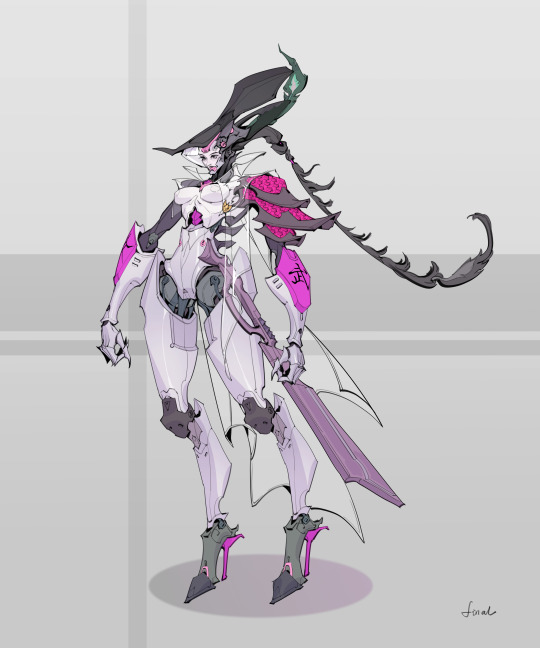
However, once I had drawn the 'front view', 'back view' and 'structural breakdown' of the character(As shown in the picture below), I realised that the amount of work involved in this design was too much for me to do in a short three week holiday.

In my short three-week holiday, I couldn't do it all at once:
1. storyboarding of "knock".
2. digital media: source and significance.
3. 3D model of bionic woman.
I changed direction in time to explore 3D technology with another design project, 'human and inhuman', which is one of the most popular of all my blog posts. That's also the reason why I decided to continue with this project.

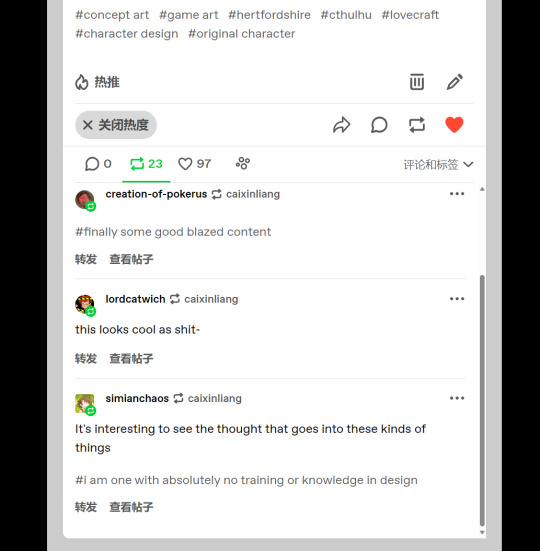
I used Zbrush to sculpt more detail for the monster character, especially the face (shown below)
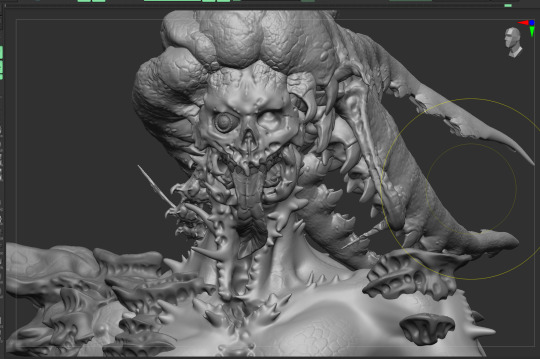
I chose the 3d software that most concept designers use: blender to adjust the material and render the model, in order to reduce the pressure on my graphic processing unit, I streamlined the model that has subdivision in zbrush to the minimum number of facets and saved the model and imported it into blender. But the result was not good, because the 3D model was streamlined in the number of faces, so many details that I had already sculpted in zbrush disappeared, and the edges of the model became so rough that you could see poly (as shown in the picture below).

So, I went back to zbrush and re-expanded the UVs for the "sub-tool" of each model.

Create a displacement map for each "sub-tool" and export it (as shown below):


Connect the displacement map of each "sub-tool" as a "texture map" to the material output of the blender (as shown below):

The final result was achieved by tweaking the lighting and material modifiers to achieve a highly detailed, lit and textured result, and rendering a Spinning turntable animation.



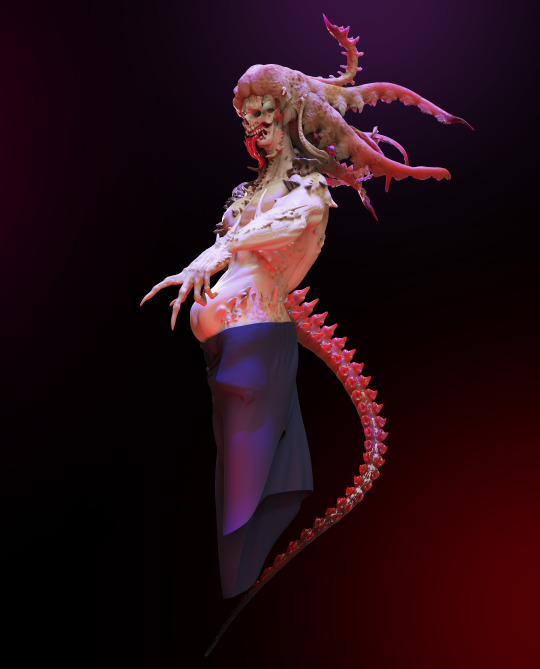
Thanks for watching~
27 notes
·
View notes
Text
‘Is blogging still relevant in the age of TikToks and Instagram?’
MDA 20009 Digital Communities
Hello and welcome to my blog, I hope you all had a great weekend :)
In today's “gen-z” era, media platforms like Tiktok and Instagram are becoming a frequent trend. As new forms of content such as videos, podcasts and social media platforms continue to dominate, some believe that the era of the traditional blog is coming to an end. One of the questions that is constantly being explored is, “In the age of TikToks and Instagram, is there still a point to blogging? However, based on my observations, I don't think blogging is dead, there is still a market for blogging, rather it has evolved and adapted to the changing digital landscape and can be differentiated from the audience of social media platforms. A closer look reveals that blogging will still have considerable value in 2024, for both individuals and businesses.
Before we dive into this topic, let's define Blog, Tiktok and Instagram.
Background: What is Blog, TikTok and Instagram?
According to Dennis, M.A. (2024), blog is an online journal in which an individual, group, or company presents a record of activities, thoughts, or beliefs. A blog consists of more than just words and pictures, and it can't be just words. Instead, it's a sum of text, layout, connections and links, and posting speed (Blogging, n.d.). Examples include blogger.com and wordpress.com, as well as Tumblr, which is the application you are now using to view this post :3
In addition, Herring et al.'s 2004 study showed that not only did personal blogs reveal their feelings and experiences, but that the mainstream media considered blogs to be newsworthy or relevant to current events, calling them “a new genre of journalism” (Filloux, 2009; Hermida, 2010), and that professional journalists were adopting the blog format as well.
Social media has been defined by Obar and Wildman (2015) that it is a mobile and internet-based platforms used to facilitate various forms of communication, social interaction, marketing and knowledge sharing (Hovestadt et al., 2021). Also, others define the term as ‘a web-based service or platform based on web 2.0 technology that enables sharing, co-creation, discussion and modification of user-generated content’ (Werder et al. 2014). Famous social media include Facebook, Twitter, Instagram and TikTok.
TikTok is a relatively new social media platform that allows users to create and share short videos of up to 15 seconds in length. As a user-generated content (UGC) platform, it has become a popular application for sharing videos (Feldkamp, 2021)
While research by Larson & Draper (2017), Instagram is a mobile application that allows users to instantly transform mobile phone snapshots into visually appealing images that can then be shared with others on the web Van Dijck (2013). TikTok and Instagram have become popular platforms for marketing campaigns because the content shared on these platforms is short, fun, trendy, creative and interactive (Zhang, 2020).
Do Blogging still holds significant value?
There is a perception that blogging may be seen as a dying industry.

Source: HubSpot
The data shows that 73% of respondents admit to skimming blog posts, while 27% read them carefully. Teicher (2020) has stated that 75% of the public prefers reading articles under 1,000 words. Teicher (2020) states that 75% of the public prefers to read articles of less than 1000 words.
Due to shifting consumption patterns and a culture of ‘instant gratification’ - in this age of instant information and short attention spans - a comprehensive and detailed approach to blog writing may seem somewhat outdated and unnecessary. Infographics and visualizations are designed to be visually appealing and interactive, which helps to capture the attention of the target audience more effectively than a lot of text (Blogging, n.d.).
However, in my opinion, blogging is not a dying industry. Even in the age of TikTok and Instagram, blogging is still relevant because of its unique capabilities, especially when it comes to deep content, personal expression, and fostering community engagement. Here are some statistics that prove that blogging is still significant.

Source: Statista

Source: Social Media Today
Evidently, there are 1.8 billion websites in the digital ecosystem and more than 600 million blogs worldwide (Armstrong 2021). Accordingly, 77% of internet users still read blogs. (Walker-Ford, 2017) which reveals that blogging is still incredibly valuable.

Source: HubSpot
On top of that, this survey results that show that blogging is still alive and well. The findings show that people enjoy reading blogs that teach them how to do new things, solve problems, and learn about new trends related to their career or industry.
Personally, I also like to use blogs when I'm learning something new, as it's perfect for providing in-depth tutorials, comprehensive guides or sharing personal experiences rather than short descriptions.
Additionally, blogs can be used not only for the purpose of sharing one's thoughts, but also as an educational tool. Oravec states that blogging is appropriate for students and helps to encourage participation in the classroom. According to Alsareef (2013), students are generally satisfied with taking courses online through social networks because it is easy to use, classes become more interesting, it provides more flexibility for extracurricular activities, and they are able to feel well educated.
Here's the end...
In short, blogging is still relevant in the age of TikTok and Instagram, and both platforms clearly have their own unique strengths and nuances. Blogging allows for in-depth content creation, while Instagram focuses on visual storytelling. However, blogs can continue to fulfill different social and informational needs, making them adaptable and relevant in the broader digital landscape. For example, blogs can also embrace the power of multimedia, and bloggers can consider incorporating images, infographics, and GIFs to enhance the visual appeal of their content and help segment text. According to a survey by Bump (2024), 32% of respondents said that videos, images, or other multimedia are the elements that interest them most when reading blog content.
Thank you for reading! See ya in next post ;)
Reference:
Alshareef, M. A. (2013). Evaluate student satisfaction for social learning network at King Abdulaziz University. Advances in Internet of Things, 03(03), 41–44. https://doi.org/10.4236/ait.2013.33006
Armstrong, M. (2021, August 6). How many websites are there? Statista Daily Data. https://www.statista.com/chart/19058/number-of-websites-online/
Blogging. (n.d.). Google Books. https://books.google.com.my/books?hl=en&lr=&id=VrhvqxjhSaEC&oi=fnd&pg=PP5&dq=blog&ots=JCUTMzaBSN&sig=aHWVbBua_dTSGpcZFQ4ctnfubOA&redir_esc=y#v=onepage&q=blog&f=false
Bump, P. (2024, January 2). The Top 3 Reasons consumers read blogs & How to attract them in 2024 [New data]. HubSpot. https://blog.hubspot.com/marketing/why-do-people-read-blogs#:~:text=In%20this%20blog%20post,%20I%E2%80%98ll%20walk%20you%20through#:~:text=In%20this%20blog%20post,%20I%E2%80%98ll%20walk%20you%20through
Dennis, M. Aaron (2024, September 17). blog. Encyclopedia Britannica. https://www.britannica.com/topic/blog
Feldkamp, J. (2021). The rise of TikTok: the evolution of a social media platform during COVID-19. In SpringerBriefs in information systems (pp. 73–85). https://doi.org/10.1007/978-3-030-66611-8_6
Hovestadt, C., Recker, J., Richter, J., & Werder, K. (2021). Digital responses to COvid-19. In SpringerBriefs in information systems. https://doi.org/10.1007/978-3-030-66611-8
Teicher, J. (2020, August 19). The lost art of the Mid-Range blog post. Contently. https://contently.com/2019/01/14/mid-range-blog-post/
Walker-Ford, M. (2017, December 4). The benefits of Blogging: 20+ stats Business owners need to know [Infographic]. Social Media Today. https://www.socialmediatoday.com/news/the-benefits-of-blogging-20-stats-business-owners-need-to-know-infograph/511816/
Van Dijck, J. (2013). Social media platforms as producers. ResearchGate. https://www.researchgate.net/publication/263565270_Social_Media_Platforms_as_Producers#:~:text=With%20the%20prolific%20use%20of%20social%20media%20platforms,
Zhang, J. (2020). Study on social media marketing campaign strategy -- TikTok and Instagram. https://dspace.mit.edu/handle/1721.1/127010
9 notes
·
View notes
Text
Blog post #8 - Week 11
1.How might the rapid spread of information on social media both increase and complicate efforts to address racial injustice?
The rapid spread of information on social media can both increase and complicate efforts to address racial injustice. Platforms, in this case Twitter, allow people of color to challenge dominant narratives and increase awareness, therefore boosting minority voices and organizing communities. For example, hashtags are a great use of increasing awareness and advocacy, to allow people to challenge the narrative. “This hashtag was powerful because not only did it start a national conversation about racial bias in mainstream news media, but it also forced many news media outlets to respond, similar to the hashtag “APHeadlines”. The hashtag “IfTheyGunnedMeDown”, challenging the narrative put forth in news outlets, was reported in four of the eight trusted news sources explored in this research, including USA Today, NY Times, ABC News, and The Washington Post, demonstrating its significance” (Lee, 8). However, the fast-paced nature of these platforms can result in short attention spans, mis/disinformation, and difficulties maintaining long-term engagement. Factors such as censorship and algorithmic bias could undermine the productiveness of these digital spaces. While social media is a helpful tool for organizing and resisting, it also offers huge challenges.
2.How does acknowledging that people driven protest movements challenge the common narrative that social media alone is responsible for political and social change?
Understanding that people driven protest movements calls into question the widely held belief that social media is responsible for political and social change by moving the focus from technologies to human action. It highlights that protest and action come from real world injustices and conflicts that are involved in economic and political systems. Social media can amplify voices and help build community, but it does not provide the drive or purpose for movements. This viewpoint challenges simplified perspectives that attribute drivers for change to platforms such as Twitter and/or Facebook, arguing that these tools are only effective when used strategically in response to inequality in society. “Collective social action that makes use of the Internet can have relatively few effects or dampen or intensify existing trends. The actual implications depend on contexts, power relations, resources, mobilization capacities, strategies and tactics as well as the complex and undetermined outcomes of struggles” (Fuchs, 84).
3.In what ways did the #NoDAPL movement uses social media to challenge narratives and disrupt colonial systems?
The #NoDAPL movement used social media to challenge dominant narratives and disrupt colonial systems by amplifying Indigenous voices that are often ignored or misrepresented by mainstream media. Activists, such as Nicholet, used social media to share real-time updates, personal stories, and footage that helped bring attention to the injustices experienced by rural and geographically dispersed tribal communities. “The #NoDAPL movement drew widespread intertribal, national, and international support and solidarity from organizations and various municipalities” (Parkhurst, 37). The social media usage not only raised awareness, but also revealed the continued effects of colonialism in the United States, such as land dispossession and environmental exploitation. “Connective actions of the #NoDAPL movement include the sharing of movement-generated content (e.g., content created by Indigenous organizations) and the uploading of content such as videos, live video streams, photos, memes, and text through social media networks.” (Parkhurst, 40). By bringing these issues to the attention of a global audience, the movement interrupted the erasure of Indigenous struggles and asserted Native sovereignty, demonstrating that online spaces can be effective to decolonial resistance approaches when joined with the movement in person as well.
4.How do the different types of internet activism help us understand both the power and risks of using digital tools to challenge governments and corporations?
There are different types of internet activism, awareness/advocacy, organization/mobilization, and action/reaction. It allows us to understand the possible benefits and risks of using digital tools to confront corporations and governments. Awareness campaigns may rapidly spread information and reach large audiences while avoiding corporate media. Mobilization initiatives allow activists to coordinate protests and form cross-regional connections. Direct activities, such as hacktivism, can disrupt systems and urge accountability. However, these same techniques carry risks. “...governments and corporations are more and more prepared to deal with these threats, they are increasingly inclined to respond similarly with online counterstrikes, and we are just moments away from open government-government cybermilitary engagements” (Vegh, 18). This shows that, while digital activism is a useful tool for resistance, it also puts activists at risk from the systems they are challenging.
Latoya, Lee A. 2017. Black Twitter: A Response to Bias in Mainstream Media.
Vegh, Sandor. 2013. Classifying Forms of Online Activism: The Case of Cyberprotests against the World Bank.
Fuchs, Christian. 2014. Communication Power in the Arab Spring and the Occupy Movement.
Deschine Parkhurst, Nicholet A. 2021. How the #NoDAPL Movement Disrupted Physical and Virtual Spaces and Brought Indigenous Liberation to the Forefront of People’s Minds.
2 notes
·
View notes
Text
The Miasma Spawn
The monsters of SANCT all originate from the same source, the Miasma. The Miasmic spawn comes into existence via the miasma siphoning the collective consciousness surrounding human fears and beliefs.
As previously explained these Monsters are split into two groups and their difficulty of being destroyed is classified through categories. SANCT typically uses this as a way to ensure most hunts go smoothly by having hunters a category higher then the spawn they are fighting. i.e. A Cat-2 Hunter can be sent alone to fight a cat-1 monster but would need a fireteam of at least one other Cat-2 to fight a spawn of that same category. Traditional Folklore Miasmic spawn emerge from cultural traditions, encompassing stories, myths, and legends passed down through generations. These beings, like the Kraken, faeries, golems, and vampires, represent ancient fears and values. They are often rooted in oral traditions and reflect a culture’s attempts to explain the unknown. Due to the decline in the oral transmission of these stories and the evolution of modern literature, traditional folklore spawn are less common.
Urban Folklore Creatures originate from contemporary myths often rooted in popular culture and local legends. They include beings such as Slender Man, Moth man, cryptids, and internet-born horrors like creepy pasta entities. These creatures reflect modern fears tied to technology, media, and societal changes. Despite SANCT’s efforts to control their spread, these myths proliferate rapidly through digital platforms. Just a few hundred people fearful of an obscure blog post about extraterrestrials are enough for the Miasma to take hold long before SANCT can respond.
Miasmic spawn possess supernatural abilities that align with the most commonly held beliefs about them, including their respective weaknesses. For example, a TF vampire may be able to transform into bats and is vulnerable to a stake through the heart, which can immobilize or incapacitate them. However, despite these traditional weaknesses, a SANCT Weapon is the only true way to permanently kill a Miasmic spawn.
Another notable anomaly is the rapid mutation of Miasmic spawn when their original folklore clashes with another set of beliefs of equal notoriety. These conflicting beliefs can cause drastic changes in the monster’s form and abilities, resulting in excess limbs, conflicting or mutated powers, and altered weaknesses. If a Hunter encounters a mutated monster, they are advised to report it to their SANCT facility as soon as it is safe to do so.

Example of each spawn type by my boyfriend, consider commissioning him!
If a Spawn of the Miasma lingers for too long, they undergo a metamorphosis. This transformation can manifest in various ways, with one of the most common being the creation of a Domain—a territory over which the creature exerts significant control, warping the environment to reflect its nature and power.
Domains form at the point of a monster's creation and, much like a virus, expand as the creature continues to exist. The manifestation of a Domain is heavily influenced by the folklore surrounding the specific monster. Within its Domain, the creature’s power nearly doubles, rendering these areas extremely hazardous. Domains frequently operate as traps for the unwary. Some are nearly imperceptible before an individual is ensnared, while others are immediately recognizable.
Any Hunter encountering a monster that has survived long enough to establish a Domain is required to report back to their facility immediately, prior to taking further action. On average, a Domain requires approximately three months to fully form; however, this duration can vary depending on several factors.
#worldbuilding#sketch#comtemporaryart#my writing#world#folklore#mythical creatures#writing fiction#historical fiction#fantasy#writing#creative writing#lore#artists on tumblr#my husbands art#digital art#urban fantasy#indie author#art#SANCT#oc#illustration#story#info#monster hunter#fictional organization#sanct
6 notes
·
View notes
Text
Mortal Kombat's Sexualized Approach to Character Design
BLOG 7: Exoticism and Sexualization in Game Media
I turned to Mortal Kombat as a surprising and comforting release for my pent-up frustrations during the turbulent times of my adolescence. I found a therapeutic release from the difficulties and rage that surrounded me in the visceral world of fatalities and brutalities. I had no idea that beneath the surface of this legendary game was a rich tapestry of themes that I would not fully comprehend until much later.
I didn't start looking at the Mortal Kombat characters through a different lens until we got to talking about exoticism and sexualization. The very characters I controlled on screen, delivering vicious finishes, abruptly transcended the status of avatars and became representations of a widespread cultural phenomenon. This insight led me to set out on an investigative quest to analyze the complex interactions between exoticism and sexualization in the framework of a game that served as both a significant source of entertainment and a turning point in my coming-of-age story.

About Mortal Kombat
The 1992 arcade game Mortal Kombat, created by Ed Boon and John Tobias, introduced a revolutionary fusion of martial arts, fantasy, and digital graphics. Its popularity made way for more entries, ensuring its place in the gaming industry as a flagship franchise.
Mortal Kombat changed as time went on, embracing new storytelling techniques and technological breakthroughs. A pixelated fight turned into a cinematic experience with deep character arcs and narratives that drew players in and kept them interested beyond the boundaries of a normal fighting game.
Academic Standpoint
For a number of decades, academic discourse has focused on the intersection of gender representation and media, especially in the context of video games. The criticism of media representations that sexually objectify women has its origins in the 1970s, as Busby (1975) and other scholars have pointed out. (Ward, 2016)
Different definitions of sexual objectification have been offered within this scholarly framework. It explores the division of bodies, body parts, or sexual functions from one's identity and goes beyond the simple visual depiction of individuals. Sexual objectification reduces people to being nothing more than tools, existing mainly for the enjoyment and use of other people. Treating people as though their bodies are the only thing that can truly represent them is part of this dehumanizing process. (Ward, 2016)
Examining current beauty standards is an important part of the conversation about sexual objectification. According to research, there are certain standards of beauty for women in relation to American men. These standards frequently dictate a particular body type, such as slender and short or rounded and curved. The idealized female form consists of a bell-shaped lower torso, rounded arms, sloping shoulders, and a small waist tucked between a rounded bosom. The extremities are also examined, including the small, delicate feet and the hands with tapering fingers. The idealized complexion is described as white, and if colored, it may occasionally have a pink flush to the cheeks. (Mazur, 1986)
Character Case Studies
The case study is only focusing on women being sexualized in the game. It is not suggesting that women are the only characters which are sexualized in the game, it could be otherwise, and the data related to it will be absent in this post.



Just for the sake of this study we are going to consider three characters, namely Mileena, Kitana and Jade from Mortal Kombat.
The physical allure of Kitana, Jade, and Mileena adheres gracefully to conventional beauty standards, characterized by a fair or wheat-ish complexion and a harmonious balance between a slender, muscular physique. Each character embodies the timeless elegance of a bell-shaped lower torso, complemented by wider hips and a gracefully narrow waist, effectively encapsulating a universally accepted archetype of femininity. Their statuesque height further refines their curves, seamlessly harmonizing with established beauty norms.
Kitana, Jade, and Mileena's wardrobe choices are always form-fitting garments that skillfully draw attention to their figures' contours, combining martial skill with appealing beauty. Their purposeful use of form-fitting apparel draws attention to their defined curves and muscularity. The purposefully crafted costumes with well-placed openings that reveal skin with a deft artistic touch are what really catch the eye. The characters' visual appeal is enhanced by the meticulous creation, which also plays a significant role in the exoticization and sexualization of the characters by skillfully fusing sensuality into their combat personas. It's important to note how their wardrobe has changed over time, with some costumes gradually baring more skin, demonstrating the franchise's flexibility in response to shifting fashion trends and cultural quirks.
Conclusion
The Mortal Kombat characters Kitana, Jade, and Mileena represent a fascinating blend of conscious design choices and traditional beauty standards in the game's intricate weaving. Their pale skin tones, toned bodies, and balanced outlines capture both the traditional values and the changing aesthetic of the Mortal Kombat world. Beyond simple combat aesthetics, the deft combination of form-fitting clothing and well-placed gaps in their costumes reveals a complex interaction between exoticization and sexualization. As the characters' looks change over time, Mortal Kombat transforms into a dynamic canvas that adapts to shifting beauty standards and cultural quirks. Past the deaths and violence is a space for gaming, introspection, and scholarly conversation that provides an in-depth examination of societal narratives, identity, and representation in the gaming industry.
References
Ward, L.M. (2016) 'Media and Sexualization: State of Empirical Research, 1995–2015,' Journal of Sex Research, 53(4–5), pp. 560–577. https://doi.org/10.1080/00224499.2016.1142496.
Mazur, A. (1986) 'U.S. trends in feminine beauty and overadaptation,' Journal of Sex Research, 22(3), pp. 281–303. https://doi.org/10.1080/00224498609551309.
#pc games#game#game art#game design#game theory#video games#gaming#videogame#gamers#fighting games#mortal kombat#jade#kitana#mortal kombat 1#mileena#character design#character art#fashion#sexualization#exoticism#game studies
17 notes
·
View notes
Text
blog post 7
Source: The radicalization of Zeke Spier
Question: Why is it important to protest in a democratic society and what does its significance hold?
It is important to protest in a democratic society because it allows you to use your voice and express their point of view. By expressing your point of view or change, you are continuously fighting for a change and making the effort to do what you believe is right. The article “ The radicalization of Zeke Spier” summarizes how “protesting is a key form of civic engagement, and it is seen as a powerful way to raise awareness about social issues occuring”. Many people use protestors as a way to bring attention to important issues that occur. Overall, it is important to create a safe space for speakers in order to keep a great democracy.
How did the internet assist in Spier’s participation and travel during the protests?
The digital media played a role in supporting Spier’s participation by keeping him informed and connected. During his travels, he would go to public libraries in order to access the internet and see what was going on and make sure he stayed connected with the social news. It was important for him to check the internet so that he was aware of where other activists would meet up. Overall, by having access to online platforms, he was aware of protests and police strategies, therefore, making it easier for him to plan around it or join others when the protesting occurred.
Source: Daniels_ White supremacist Social Mvmt
What is one of the arguments Castell makes?
One of the arguments Castell makes is that social movements in the digital era are mainly shaped by cultural values. This means that the way people communicate and advocate is not solely based on political and economic factors, but mainly shaped by cultural norms or beliefs. He also explains how the internet has provided new platforms across the digital media, ultimately creating more spaces for people to use their voices and express themselves.
How does the internet help white supremacist identities?
The article explains how the internet plays a big role in helping and enforcing white supremacist identities by allowing the creation of racist communities online. By allowing this to happen, it allows for other users to join and share their disgusting ideologies. These communities have allowed white supremacists all around the world to connect into one community and join each other. The articles explain how “websites such as stormfront.org help white supremacist promote their ideologies globally, therefore creating a shared identity”.
3 notes
·
View notes
Text
9. The Walking Dead: A Game That Grows With You

The Walking Dead, a choose-your-own-plot game, was released in 2012 by Telltale Games. It's pretty popular, and it came out early, but I'm embarrassed to say I only just finished it! The charming characters and worldview of The Walking Dead completely hooked me. It's not every day that a plot-driven game makes me feel like I'm growing up as a character in a game. Most games with strong plots, even the super immersive ones, still make me feel like I'm just a player and not a character in the game. But with The Walking Dead, I felt like I was growing up with the main character in the story!
I'd like to explore why The Walking Dead evokes this sense of personal growth.
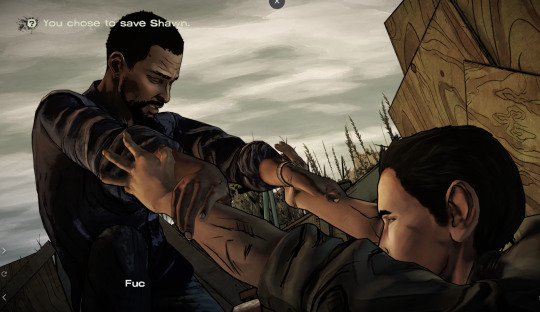
1. Story and Gameplay Mechanics Work Seamlessly Together
The Walking Dead is set in a world hit by a zombie virus. Each season, you take on the role of the main character and have to make choices that reflect the human struggles in this world. That's the heart of the game.
The Walking Dead is all about making tough choices, and the game lets you experience the story while choosing from different options that you think are right for the character. As you play, you start as an observer, but eventually, you become one of the characters and start affecting the story.
For example, in the first season, you're constantly making moral choices in a time crunch, like whether to save Kenny's son or help another teammate. These choices affect the trust between the characters and the plot's future. This is what makes the game so immersive and emotionally resonant for players.

2. Character Design Evokes Strong Emotional Connections
Like I said before, The Walking Dead lets you make many choices. So, instead of saying that the player is playing a character, it's better to say that the player is really acting out of their own will, going through a series of choices, and becoming the character that they’re playing in the game.
This makes the player's emotional connection to the character more profound and stronger. It also creates strong emotional connections with other characters in the game.
For example, in the first season, players must play the main character, Lee, to care for a young girl named Clementine. As the game progresses, most players develop a deep connection with Clementine and want to protect and educate her.
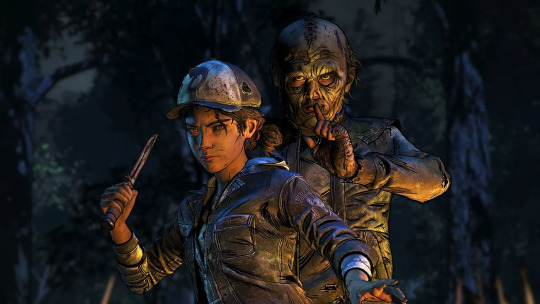
3. Comic-Style Art Design Enhances the Experience
The Walking Dead is based on a comic book by the same name. Instead of using a realistic art style, the game adopts a comic book style closer to the original.
This not only echoes the original manga and satisfies fans of the original manga but also gives the game's art style a unique visual recognition in the wider game community.
After all, The Walking Dead is set in a zombie-ridden world, and the story must be filled with gory fight scenes, so the art style avoids the overly realistic gore and achieves a more tense and artistic performance.

Conclusion
I'm a big fan of The Walking Dead. Besides the three points I mentioned, I also like that at the end of the game, a statistic table always shows which choices are most and least popular. This makes me feel connected to other players and allows me to think about my choices.
Overall, The Walking Dead offers a unique and interactive continuation of the player experience.
Reference
Game Developer (n.d.) The Walking Dead: Let Gameplay Support the Story. Available at: https://www.gamedeveloper.com/design/the-walking-dead-let-gameplay-support-the-story (Accessed: 5 January 2025).
Game Developer (n.d.) Classic Postmortem: Telltale Games' The Walking Dead (2012). Available at: https://www.gamedeveloper.com/design/classic-postmortem-telltale-games-the-walking-dead-2012 (Accessed: 5 January 2025).
2 notes
·
View notes
Text
Academic Blog #10
Finally reaching the last planned piece, I'd like to touch upon one of my all-time favorite game series, Bayonetta, discussing how this female-led game series has made a unique impact in the action game genre with its distinctive material and artistic style.

Bayonetta (2009) & Bayonetta 2 (2014)
Today's gaming world still largely lacks charismatic heroines as protagonists, and the action game genre, often dominated by masculine traits, finds a refreshing change in Bayonetta, carving out a female-centric cultural niche. Created by Hideki Kamiya, also the founder of the Devil May Cry series, Bayonetta was envisioned from the start as an action game filled entirely with feminine elements. This idea, which seemed crazy and obsessive at the time, gained immense popularity upon the game's release. Defeating enemies with dance-like grace and moving seductively through dangerous battlefields, Bayonetta’s character design, handled by concept artist and fashion designer Mari Shimasaki, skillfully blends fashion elements and unique interpretations to create an iconic and fancy character image.

Concept of Bayonetta for Bayonetta 2 (2014), from the art book The Eye of Bayonetta 2, by Mari Shimasaki
Bayonetta offered players an unprecedented freshness, combining excellent gameplay design and a tactile experience, achieving immense success upon its debut.
To me, Bayonetta's most appealing aspect is its rebellion against stereotypes and traditional conventions. The protagonist, Bayonetta, a witch who and her kin were persecuted in the Witch Hunts – a reference to the unjust historical trend against women that actually occurred in the medieval world. Women not conforming to the mainstream were stigmatized, accused of witchcraft, and harmed as heretics or witches. Bayonetta uses witchcraft and magic to defend herself, collaborating with various demons from Inferno, breaking through any force that stands in her way.
Enemies encountered in the game are mostly angels from Paradiso (Paradise), named after beautiful and praiseworthy things.

Grace & Glory, from Bayonetta (2009)
Though adorned with lavish elements like marble, gold, and holy halos, most angels have bizarre body structures and fierce faces, which enhances the uniqueness of these characters. Even at the end of the first game, Bayonetta faces her biological father as the last boss, which can be interpreted as a challenge to traditional patriarchy. The idea of beauty corrupted into threat reflects how the Bayonetta series has carved a rebellious path.
This rebellion has been warmly embraced by the queer community among the players, perhaps because queer culture itself is often seen as rebellious by society. Even in defiance, one can be stylish, strong, and beautiful – a profound resonance Bayonetta brings to these players.
References
Platinum Games (2009) Bayonetta [Video Game] Sega.
Platinum Games (2014) Bayonetta 2 [Video Game] Sega & Nintendo.
Sega & Platinum Games (2014) The Eye of Bayonetta 2. Japan: Udon Entertainment.
0 notes
Text
Blog 9: The Visceral Side of Digital Media: Horror in "Resident Evil"




Digital media is such a masterclass in using the spine-tingling visceral potential it offers to create fear and tension, as seen in games or series like the Resident Evil series. Games achieve all this through insane jump scares and eerie sound effects, engaging players in an endless world of dread via resource management mechanics. Though heavily dependent on Freud’s theory of the uncanny, the series unsettles its players by entangling two familiar elements with two unfamiliar ones: monstrous creatures with human appearances or desolate settings where anything feels normal until some horror lurks out of sight. The blending puts players on edge, as if they are in that extra high, uneasy psychological space (Ash, 2013; Gregg and Seigworth, 2009).
What distinguishes Resident Evil is its ability to do so emotionally and physically. Players must steer through situations occupied with tension, paying attention to every bullet they use or any decision they make. The activity increases the fear as resources must be conserved, and split-second choices made, raising the stakes. Unlike passive media like films or books, players must physically deal with the horrors and respond in real time (Freeman, 2004).
The tension is further crystallized by subtle creaks, dark growls, or strange noises that explode into earshot, shaking the players’ senses beyond the visual. All these elements, coupled with heart-pounding gameplay, create a unique experience in its emotional and physical ability to evoke intense responses (Mobbs, 2015).
Somehow, it is Resident Evil that recalls how digital media blends narrative, mechanics, and sensory design into one shocking whole. It cranks up the responses to dizzying, mind-shocking intensities that, whether or not it succeeded in all regards, certainly revolutionized the limits of the immersive.
Conculsion
The visceral/immersive qualities of digital media explored as a case study through Resident Evil is highly relevant to my practice as a creative practitioner. It shows the strength of confederate narrative, sensory design, and interactivity in producing visceral emotional reactions. Through this analysis, I learnt how showing contrasts between both familiar and unknown (as highlighted by Freud with his idea of the uncanny) could create a tension that builds the level of engagement of a reader. Additionally, it shows the power of resource management and decision-making mechanics to raise the stakes and enhance immersion. These experiences can at that point be connected to my possess work by making multi-sensory encounters that are not essentially detached, but where the group of onlookers is dynamic and candidly contributed. Utilizing procedures such as unobtrusive sound design, layered stories, or challenging choices, I can bring out influence and build more complex, locks in, and immersive universes. As such, this mindfulness sets me up to look at the interesting ways in which digital media can extend and shape the domain of the conceivable with the story told, permitting for reactionary intrigued in not fair display but passionate and mental reverberation.
References
Ash, J. (2013) ‘Technologies of Captivation: Videogames and the Attunement of Affect’, Body and Society, 19(1), pp. 27–51.
Freeman, D. (2004) ‘Creating Emotion in Games: The Craft and Art of Emotioneering’, ACM Computers in Entertainment, 2(3), Article 8a, pp. 1–11.
Gregg, M. and Seigworth, G. J. (2009) The Affect Theory Reader. Durham: Duke University Press.
Mobbs, S. (2015) ‘The Evocation and Expression of Emotion through Documentary Animation’, Animation Practice, Process & Production, 5(1), pp. 79–99.
0 notes
Text
The Ultimate Guide to Local SEO in Tampa: Ranking Higher in Your Neighborhood
In today’s competitive digital landscape, businesses in Tampa must leverage Local SEO to stay ahead. Whether you run a small business or a growing enterprise, ranking high in local search results can significantly boost visibility and drive more customers to your doorstep. In this guide, we’ll cover the essential strategies to help your business dominate local searches in Tampa.

Why Local SEO Matters
Local SEO ensures your business appears in search results when potential customers look for services near them. With more people using mobile devices to find businesses, optimizing for local search is crucial. If your business isn’t ranking well, you could be missing out on a significant number of leads.
Essential Local SEO Strategies for Tampa Businesses
1. Optimize Your Google Business Profile
Google Business Profile (GBP) is a key component of Local SEO. A well-optimized GBP listing can help you appear in Google’s Local Pack and Maps.
Ensure all business information (name, address, phone number) is accurate.
Use relevant keywords like web design in Tampa and SEO service in Tampa in your business description.
Upload high-quality images of your business and services.
Collect and respond to customer reviews regularly.
2. Use Local Keywords Strategically
Incorporating location-based keywords in your website content helps improve rankings. For example:
"Looking for expert web design in Tampa? Great Impressions provides top-notch website solutions."
"As a leading digital marketing company in Tampa, we drive growth with targeted strategies."
"Our marketing agency in Tampa specializes in SEO, PPC, and content marketing to increase your online presence."
"Boost your rankings with our trusted SEO service in Tampa."
3. Build Local Citations and Listings
Submit your business to reputable local directories like Yelp, Yellow Pages, and the Tampa Chamber of Commerce. Ensure your NAP (Name, Address, Phone Number) is consistent across all platforms to enhance credibility.
4. Encourage Customer Reviews
Positive customer reviews play a significant role in building trust and improving rankings. Encourage satisfied clients to leave reviews on Google, Yelp, and Facebook.
5. Optimize Your Website for Local Search
Your website should be optimized for Tampa-based searches. Key elements include:
Location-specific service pages (e.g., "Best web design in Tampa")
Embedding Google Maps for easy navigation
Mobile-friendly design for better user experience
6. Leverage Local Link Building
Earning backlinks from reputable local sources can strengthen your SEO efforts. Partner with local businesses, participate in community events, and guest post on local blogs to improve your website’s authority.
7. Use Social Media for Local Engagement
Engaging with the Tampa community on social media platforms like Facebook, Instagram, and LinkedIn can boost brand awareness. Post location-based content, promote special offers, and interact with local customers.
Conclusion:
By implementing these Local SEO strategies, businesses in Tampa can increase their online visibility, attract more local customers, and stay ahead of the competition. At Great Impressions, we specialize in helping businesses optimize their online presence. Whether you need SEO service in Tampa, web design in Tampa, or complete digital marketing solutions, our team is here to help.
Need expert Local SEO assistance? Contact Great Impressions today and take your business to the next level!
2 notes
·
View notes
Text
🌿 The #BodyPositive Movement on Tumblr: A Free Space or Still Limited?
MDA20009 Digital Communities
On Tumblr, #BodyPositive is more than just a hashtag—it is a community where people challenge traditional beauty standards, seek self-acceptance, and spread messages of body love. While this movement has helped many individuals gain confidence, it still faces certain limitations.
📖 The Origin and Development of #BodyPositive
The #BodyPositive movement did not emerge randomly; it originated from the Fat Acceptance Movement in the late 1960s in the U.S. (Body Positivity, 2022), a time when Western beauty standards favored thinness and marginalized larger bodies.

With the rise of social media, the movement expanded rapidly, particularly on Tumblr—a platform known for its anonymity and engagement-driven features like hashtags and reblogging (Osborn, 2022). Here, a #BodyPositive post can easily be shared across different communities, such as #transisbeautiful (supporting transgender individuals) or #mentalhealthawareness, broadening awareness of body diversity.
🔍 Tumblr’s Role in the #BodyPositive Movement
Tumblr plays a significant role in the #BodyPositive movement, offering an open space for sharing and promoting self-acceptance. However, it still struggles against deep-rooted societal biases.

Key factors include:
✔️ Anonymity, allowing users to share body images without fear of judgment.
✔️ Reblogging mechanisms, facilitating the spread of #BodyPositive messages across communities.
✔️ An open environment where marginalized groups can find support and solidarity.
Most comments on #BodyPositive posts are encouraging and supportive, reflecting Tumblr’s role as a space for social critique and personal storytelling.



Blog’s link: https://www.tumblr.com/perel/712327847937703936/check-out-my-body?source=share
However, research suggests that some content remains sexualized. Instead of focusing on self-acceptance, certain comments primarily evaluate women's appearances, highlighting the persistent societal bias within the movement.


⚖️ Is Tumblr Truly a Public Sphere?
Although Tumblr fosters a space for the #BodyPositive movement, it falls short of being a true public sphere, as described by Jürgen Habermas. According to his theory, an ideal public sphere is a space where individuals can discuss social issues freely and equally. However, social media does not fully align with this concept. A study on digital media suggests:

Similar limitations apply to the #BodyPositive movement on Tumblr: algorithmic restrictions and content moderation can reduce diversity, users often interact within echo chambers, and the movement continues to emphasize physical appearance rather than fundamentally shifting perspectives on body image.
⚖️ The Lack of Diversity in #BodyPositive
Although the #BodyPositive movement aims for inclusivity, studies reveal certain limitations. A study analyzing 300 images in the #BodyPositive movement found:
82.3% featured white women, → reflecting a lack of racial diversity.
50% included makeup, → suggesting that natural beauty is not fully embraced.
Only 17% showcased 'imperfections' such as scars, stretch marks, or acne (Griffin et al., 2022).
Rather than completely dismantling beauty norms, the movement sometimes expands existing standards—making them more flexible but not entirely transforming them.

🎭 When the Movement Still Focuses on Appearance
While #BodyPositive broadens the definition of beauty, it continues to focus on physical appearance (West, 2022). Research by Cohen et al. (2020) found:
32% of images featured revealing or highly revealing clothing.
34% contained elements of body objectification.
Additionally, on other platforms like Instagram, the majority of people who openly share their journey of body acceptance are still white, heterosexual, young, and have body types that align with conventional beauty standards (Griffin et al., 2022)
instagram
This has led many to question whether the movement genuinely helps everyone feel accepted or if it still operates within certain limitations.
🚨 Tumblr’s 2018 Content Moderation Policy and Its Impact on #BodyPositive
In 2018, Tumblr implemented a content moderation policy banning NSFW (Not Safe for Work) content, significantly impacting the #BodyPositive movement. The policy aimed to reduce child exploitation and extremist content (Sands, n.d.), but it also restricted body-positive content.
According to Habermas’s public sphere theory, Tumblr was considered an open space where individuals could discuss freely. However, the 2018 policy reduced this freedom, leading to:
❌ The removal of many body-related and sex-positive posts.
❌ A decline in diversity within the #BodyPositive movement.
❌ A migration of users to other platforms with stricter commercialized algorithms (Sands, n.d.).
As a result, while the policy aimed to regulate harmful content, it inadvertently restricted self-expression within the #BodyPositive community, limiting diversity and reducing Tumblr’s role as an open and inclusive space for body acceptance.
🔮 Conclusion
Tumblr has been a crucial platform for the growth of the #BodyPositive movement, fostering a space for self-expression and community building. However, research shows that even in an open environment, traditional beauty standards still exert a strong influence.
To achieve the movement’s true objectives, further steps are necessary:
✔️ Enhancing content diversity, especially by encouraging participation from underrepresented groups.
✔️ Shifting from Body Positivity to Body Neutrality, recognizing bodies as natural aspects of human existence rather than assigning value based on appearance.
✔️ Improving Tumblr’s algorithms, ensuring fair visibility of non-commercialized or less conventional body-positive content.
Ultimately, Tumblr must continue to serve as an open platform where the #BodyPositive movement can thrive—not just as a fleeting trend but as a meaningful shift in how society perceives bodies and self-worth.
References
Body positivity. (2022). Psychology Today. https://www.psychologytoday.com/intl/basics/body-positivity
Cohen, R., Newton-John, T., & Slater, A. (2020). The case for body positivity on social media: Perspectives on current advances and future directions. Journal of Health Psychology, 26(13), 2365–2373. https://doi.org/10.1177/1359105320912450
Griffin, M., Bailey, K. A., & Lopez, K. J. (2022). #BodyPositive? A critical exploration of the body positive movement within physical cultures taking an intersectionality approach. Frontiers in Sports and Active Living, 4(908580). https://doi.org/10.3389/fspor.2022.908580
Kruse, L. M., Norris, D. R., & Flinchum, J. R. (2018). Social media as a public sphere? Politics on social media. The Sociological Quarterly, 59(1), 62–84. https://doi.org/10.1080/00380253.2017.1383143
Osborn, T. (2022). From New York to Instagram: The history of the body positivity movement. BBC Bitesize. https://www.bbc.co.uk/bitesize/articles/z2w7dp3
Sands, M. (n.d.). Tumblocalypse: Where tumblr and its users are headed after the ban. Forbes. https://www.forbes.com/sites/masonsands/2018/12/20/tumblocalypse-where-tumblr-and-its-users-are-headed-after-the-ban/
West, M. (2022, April 29). Body positivity movement: Benefits, drawbacks, vs. body neutrality. Www.medicalnewstoday.com. https://www.medicalnewstoday.com/articles/body-positivity#in-popular-culture
2 notes
·
View notes
Text
The Future of XMLTV in the Digital Landscape of 2024

As we navigate through 2024, the digital entertainment landscape continues to evolve at a rapid pace. Amidst the plethora of content delivery formats, XMLTV stands as a significant tool for electronic program guides (EPGs) and other applications requiring TV listings. In this blog post, we will explore the future of xmltv epg source and delve into how search engine optimization (SEO) and digital marketing strategies can be effectively incorporated into the XMLTV framework to ensure maximum visibility and user engagement.
Understanding XMLTV in the Current Digital Ecosystem
XMLTV is a standard for TV listings that is used by a variety of applications to display up-to-date programming information. Despite the rise of on-demand streaming services, XMLTV remains relevant for traditional broadcast and cable television, as well as for IPTV and other emerging platforms that offer live TV options.
SEO Optimization for XMLTV
Optimizing XMLTV for search engines is crucial for reaching the widest possible audience. Here’s how you can ensure that your xmltv guide data are SEO-friendly:
Keyword Research
Identify Relevant Keywords: Focus on keywords that potential users might search for, including the names of shows, channels, genres, and specific airing times.
Use Long-Tail Keywords: These are more specific and less competitive, which can help in ranking higher for niche queries.
Metadata and Tags
Title Tags: Incorporate relevant keywords into the title tags of your XMLTV files. This helps search engines understand what the content is about.
Meta Descriptions: Write clear and concise meta descriptions for your XMLTV listings that include targeted keywords.
Schema Markup: Use this to provide search engines with detailed information about the TV listings, such as the time, channel, and program names.
Content Quality and Freshness
Regular Updates: Keep the XMLTV files updated with the latest programming to ensure that the content remains fresh, which is favored by search engines.
Unique Content: Make sure the descriptions within the XMLTV are unique and not just copied from other sources.
Digital Marketing Strategies for XMLTV

To enhance the reach and effectiveness of xmltv guide, integrating digital marketing strategies is essential.
Social Media Integration
Share Updates: Use social media platforms to share updates about new and popular TV shows or changes in the schedule.
Engage with Viewers: Create interactive content that encourages viewers to engage with the listings, such as polls or trivia related to the shows.
Email Marketing
Newsletter Subscriptions: Offer a subscription service for viewers to receive personalized TV guides via email, tailored to their interests.
Segmentation: Use segmentation to send targeted emails with listings that align with the preferences of different audience segments.
Partnerships and Collaborations
Work with TV Networks: Collaborate with television networks to get exclusive content or early listings that can be promoted as a USP (Unique Selling Proposition).
Syndication: Syndicate your xmltv listings with other online TV guide services to expand reach.
Analytics and Performance Tracking
Monitor Traffic: Use analytics tools to track the traffic to your XMLTV listings and understand user behavior.
SEO Performance: Regularly check your rankings for targeted keywords and optimize accordingly.
The relevance of XMLTV in 2024 is multifaceted, catering not only to traditional TV viewers but also to users of digital platforms seeking a comprehensive TV guide.
Gathering insights into the importance of anchors link building in seo and robust digital marketing strategies in the XMLTV framework, content creators can ensure that their listings are not only visible but also engaging for viewers. As we look toward the future, the integration of technology and strategic marketing will continue to play a pivotal role in the evolution of television content delivery.
The key to success with XMLTV lies in the ability to adapt and innovate, ensuring that the content meets the dynamic demands of the modern user while staying ahead in the competitive digital space. By following the guidelines provided, XMLTV providers can optimize their presence and offer a valuable service to viewers worldwide.
youtube
12 notes
·
View notes